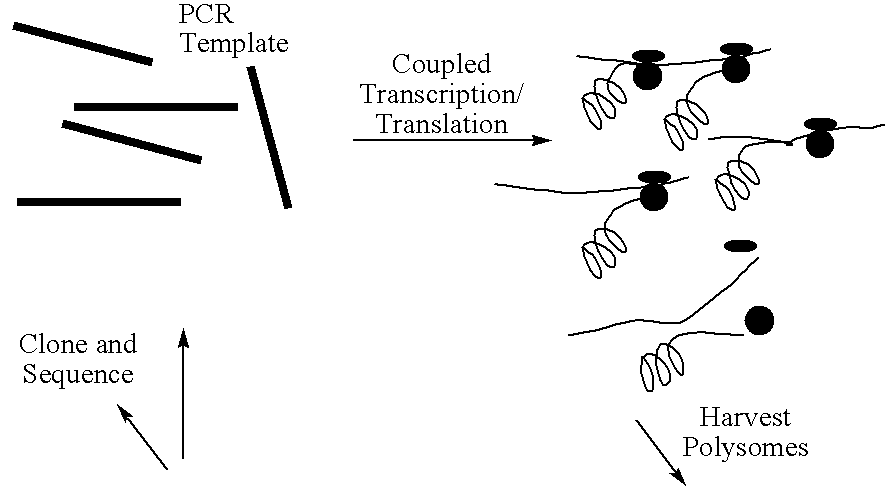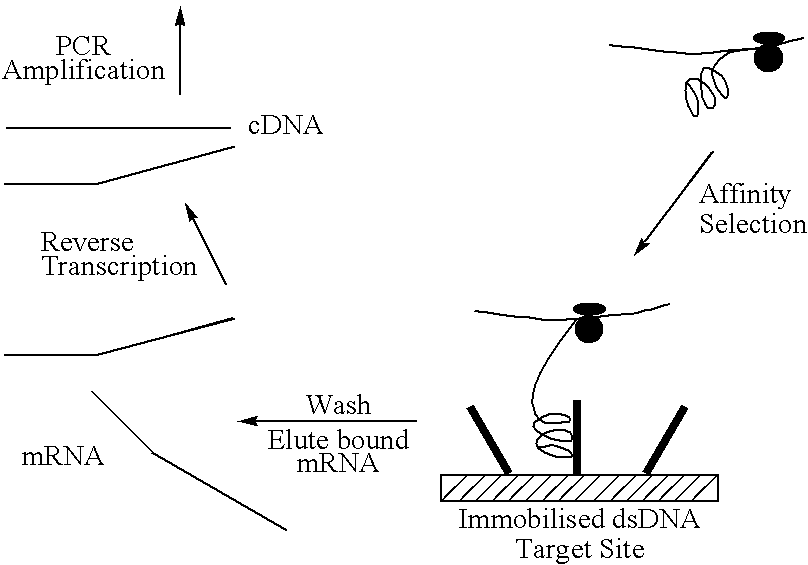Screening system for zinc finger polypeptides for a desired binding ability
a screening system and zinc finger technology, applied in the field of screening system for zinc finger polypeptides for a desired binding ability, can solve the problem of misinterpretation of the significance of the correlation between an amino acid and a base, and achieve the effect of determining specificity and affinity
- Summary
- Abstract
- Description
- Claims
- Application Information
AI Technical Summary
Benefits of technology
Problems solved by technology
Method used
Image
Examples
example 1
Preparation of a Varied Zinc Finger Polypeptide
Zinc finger polypeptides incorporating variation at selected positions are constructed in accordance with the preceding instructions, or as described in any one of GB9710805.4, GB9710806.2, GB9710807.0, GB9710808.8, GB9710809.6, GB9710810.4, GB9710811.2, GB9710812.0 or EP95928576.8, which are incorporated herein by reference.
example 2
The Template Construct
The construct is similar to that of Mattheakis et al (1994) Proc Natl Acad Sci USA, 91, 9022-9026, but with some modifications to increase the efficiency of ribosome stalling.
General Structure
The general structure of a transcription template suitable for selection of zinc finger polypeptides according to the present invention is shown in Table 2.
TABLE 2 General Structure of Zinc Finger Transcription Unit ##STR3##
The unit contains a bacteriophage T7 RNA polymerase promoter, which drives a coding sequence encoding a zinc finger polypeptide. Appended to the coding, sequence is a linker / stalling sequence region which comprises a flexible Gly / Ser linker, an easily translatable region and a stalling region which is composed of codons rare in E. coli. Rare codons hold up the translation process and effectively stall the ribosome on the template.
Sequence Information
T7 Promoter
This is the standard bacteriophage T4 RNA polymerase promoter, having the sequence TA ATA CGA ...
example 3
The Procedure
The template used is produced by PCR and so is linear, double-stranded DNA of approximately 670 bps.
Transcription is carried out in a coupled transcription and translation system for linear DNA templates. (The E. coli 530 extract system for linear DNA-Promega.)
At present, transcription / translation reactions are carried out in 50 .mu.l volumes, each primed with approximately one pmole template--(400-500 ng, up to 10.sup.12 DNA molecules).
The extract system does not contain T7 RNA polymerase, so this is supplemented by adding T7 polymerase enzyme, and endogenous E. coli RNA polymerase is inhibited by adding rifampicin.
Template (0.5 pM / .mu.l) 2 .mu.l Rifampicin (50 .mu.g / nl 1 inhibits E. coli RNA polymerase BZA (100 mM) 1 / 2 inhibits proteases ZnCl.sub.2 (20 mM) 1 1 / 4 500 .mu.M final concentration, for zinc finger folding Amino acid mix 5 530 Premix 20 530 Extract 15 RNasIN 1 / 2 inhibits RNases T7 RNA polymerase 1 (.gtoreq.1000 U) H.sub.2 O 3 3 / 4 50 .mu.l
incubate at 25.degre...
PUM
| Property | Measurement | Unit |
|---|---|---|
| Molar density | aaaaa | aaaaa |
| Molar density | aaaaa | aaaaa |
| Molar density | aaaaa | aaaaa |
Abstract
Description
Claims
Application Information
 Login to View More
Login to View More - R&D
- Intellectual Property
- Life Sciences
- Materials
- Tech Scout
- Unparalleled Data Quality
- Higher Quality Content
- 60% Fewer Hallucinations
Browse by: Latest US Patents, China's latest patents, Technical Efficacy Thesaurus, Application Domain, Technology Topic, Popular Technical Reports.
© 2025 PatSnap. All rights reserved.Legal|Privacy policy|Modern Slavery Act Transparency Statement|Sitemap|About US| Contact US: help@patsnap.com



